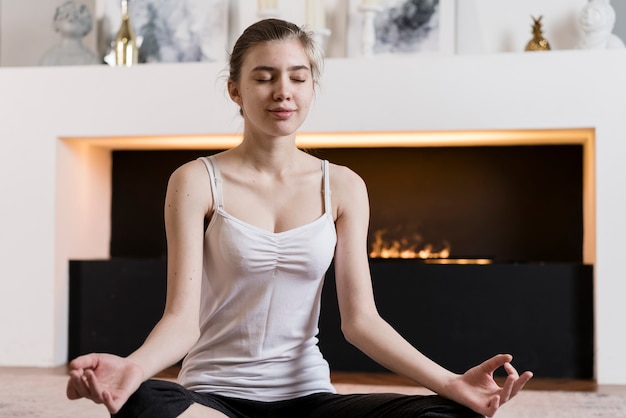
Yoga isn’t just about flexible limbs; it has many benefits for memory, heart, and bone health. More and more people in the UK are joining yoga classes, with an annual expenditure of £790 million on classes and mats. The practice of yoga has evolved, including some unusual forms like rage yoga, naked yoga, and even dog yoga.
Scientific research supports yoga’s benefits. For example, a study at UCLA found that a three-month yoga and meditation course was more effective than memory exercises in reducing age-related brain issues. It also showed improvements in sleep among breast cancer survivors.
Lucy Edge, a former advertising executive, turned to yoga after a severe depression. She took a break and went to India to study yoga, returning with a sense of happiness and contentment. Her experiences led her to write books about yoga and create Yoga Meds, which lists clinical trials on yoga’s benefits for various conditions.
Yoga is beneficial for memory improvement. A UCLA study compared brain scans and memory tests of adults over 55 after 12 weeks of yoga and meditation versus traditional memory exercises. Those who practiced yoga showed significant improvements in spatial and visual memory, reduced depression and anxiety, and better stress resilience.
You don’t need to spend hours doing difficult poses to benefit from yoga. In the study, participants attended a weekly hour-long Kundalini yoga class, which is a gentle form that includes breathing techniques, meditation, and chanting. They also practiced Kirtan Kriya, a type of meditation involving chanting and hand movements, for 20 minutes daily.
Yoga can also be good for your heart. A review published in the European Journal of Preventive Cardiology in 2014 found that yoga could lower heart disease risk as effectively as traditional exercises like brisk walking. Reducing stress through yoga is key since stress contributes to heart disease by increasing blood pressure and heart rate.
For heart health, gentle yoga poses can be very beneficial. Restorative yoga, which involves holding postures supported by bolsters and cushions for up to 12 minutes, is excellent for stress reduction.
Yoga can aid in back pain management. Musculoskeletal physiotherapist and yoga teacher Sarah Shone developed yoga classes for back pain rehabilitation, with 87% of participants reporting less pain. The National Institute of Clinical Excellence recommends yoga for lower back pain. It also strengthens the pelvic floor muscles and can help increase bone density.
If you’re starting yoga, choose a gentle style like Hatha or Iyengar. Inform your instructor about any health issues. For conditions like back pain, check if you qualify for subsidized yoga through an exercise referral scheme.
A good yoga mat is essential. Depending on where you’ll use it, you might prefer a thicker mat for joint protection. If you need to carry it around, ensure it’s lightweight and easy to transport. Consider your height to avoid feeling restricted during practice.
For a reliable yoga mat, consider the Elephant Cork Yoga Mat from Valka Yoga, which is eco-friendly, antimicrobial, and odour-resistant. It’s supportive and comfortable, making it suitable even for intense poses.
Additionally, yoga blocks like the Valka cork block can help with difficult poses by providing extra length and stability. Various yoga styles cater to different needs, so whether you are a beginner or an experienced yogi, there is a type of yoga for you.
For more in-depth learning, you can check out Lucy Edge’s new book.




